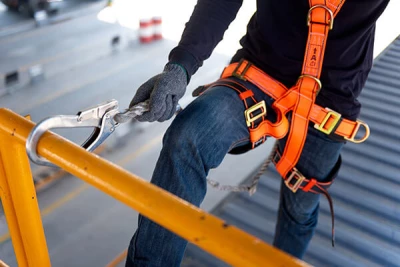Carbon Monoxide Safety
Published 11.7.2022
Carbon monoxide (CO) poisoning is more common during the winter months as people increase their use of heating devices. Known as the silent killer, carbon monoxide is hard to detect because you can’t see it or smell it. Any living or work area that is heated with a gas or wood-burning appliance that is not properly maintained (or is in a space that is not properly ventilated) is susceptible to carbon monoxide poisoning.
According to the CDC, each year more than 400 Americans die from unintentional CO poisoning not linked to fires, more than 20,000 people visit the emergency room, and more than 4,000 people are hospitalized. CO poisoning is the leading cause of poisoning deaths in the US.
Symptoms of low to moderate CO poisoning include,
- Headache
- Shortness of breath
- Fatigue
- Confusion
- Nausea
- Dizziness
Symptoms of high-level CO poisoning include,
- Mental confusion
- Loss of muscular coordination
- Vomiting
- Loss of consciousness
- Death
General Safety Tips
- Never burn charcoal indoors
- Never leave your car running in a garage or poorly ventilated area
- Never use your stove to heat up your home - this can lead to as buildup of CO.
- Never use a generator in your house
- Incorporate regular professional inspections on your gas-burning appliances and heaters to ensure there are no issues with using them inside your home.
- Install carbon monoxide alarms on each floor of your home
- Regularly test those alarms at least once a month and replace them according to the manufacturer's guidelines.
Remember This!
If you think you are experiencing any of the symptoms of carbon monoxide poisoning, get yourself outside immediately. You could lose consciousness and die if you stay in your home.
Take Action to Work Safely
Published 11.14.2022
There are many variables for success in everything we do. At work, there are many qualities in those individuals who are viewed as people who get things done and are effective in their position. One key attribute that successful people share is that they take action. Taking action is the foundation in succeeding at whatever you are trying to get accomplished. This basic principle is very important for success in every aspect of our work including, working safely.
Safety is one thing that does not happen by accident. Massive thought and action are necessary to ensure everyone goes home safe and healthy each day. This thought and action begins long before we even step foot on a jobsite, it begins with our commitment to you and your families. We can provide all of the training, resources, tools, equipment, etc. needed to work safely but if you do not take action to utilize these things, then it is wasted effort.
An example of this at the most basic level is hazard identification. A large amount of time each year is spent on training everyone to recognize hazards. While recognizing hazards is extremely important, it is only the start of the process to ensure safety during a work task. After hazards are identified, action needs to be taken to mitigate or eliminate the hazard. If you only complete the first step of identifying the hazard but don’t take the second action step to mitigate it, you still leave yourself and everyone else exposed to the hazard. Without action, nothing gets done.
What does working safely look like?
- Involving the right personnel to get hazards corrected or eliminated
- Stopping work to take the time to make a work task safe before proceeding
- Taking ownership of a problem and seeing it through that it gets corrected
- Communicating hazards or mitigation plans to those who could be harmed
- Asking for help on how to perform a task safely and more efficiently
Remember This!
You are the first line of defense against unsafe practices. Be somebody who takes action to ensure safety during work tasks. Do not rely on others to speak up or take the steps necessary to ensure your safety or the safety of others around you. When you identify a hazard take ownership of it and pursue whatever action is needed to correct the situation.
Blinded by the Light
Published 11.28.2022
Who remembers the song "Blinded by the Light" by Manfred Mann's Earth Band? If you haven't heard or don't recall it, it is a high-energy track about the invincibility of youth and the hopeful perspective that anything is possible. Well, this week's Tool Box Talk isn't really about great rock hits, rather it's about driving in the dark and avoiding night blindness.
You may not know the name for it, but if you drive at night, you've probably experienced situational night blindness. It can occur when you are temporarily blinded by a bright light such as an oncoming cars' headlights, especially if they have their bright lights on. When you're momentarily blinded by a bright light, your pupils' contract and adjust to the sudden light intensification. Then, when the light passes, your pupils readjusts to the subsequent lower light level by dilating.
The issue surrounds the brief time your eyes are making these adjustments, your vision is impaired. Without enough light, we lose much of our contract sensitivity and peripheral vision.
To help you navigate nighttime driving, we offer these tips:
- Drive within the visual range illuminated by your headlights, not by what you think you see beyond them. At night, headlights limit our view to only 250-350 feet of the road ahead.
- Adjust your rearview mirror to the nighttime setting to dim any headlight glare coming from behind
- Don't look directly at the oncoming lights, instead focus your eyes on the right edge of the road to avoid being blinded.
- Keep your windshield and headlights clean, inside and out.
- Shift your view between the road and your vehicle's rear & side mirrors
- Turn your head from side to side to increase your peripheral vision
- Use high beams when you can





